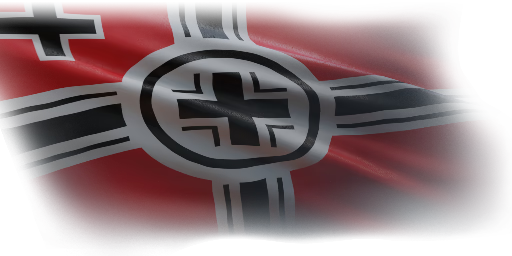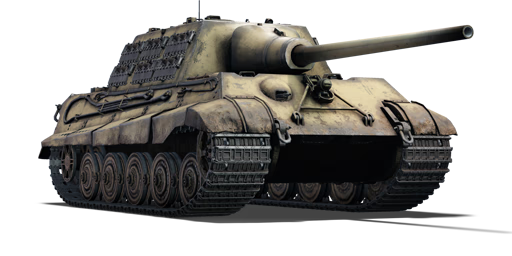



The Jagdtiger (Sd.Kfz. Index: Sd.Kfz. 186) was the final evolution of German tank destroyers growing progressively heavier and more heavily armed over the years - and as any extreme specialization in one field tends to cause, it was very lacking in many other areas, most notably mobility and gearbox reliability. First starting out as a vague requirement to mount a 12.8 cm gun to a self-propelled hull in 1942 and then a Panther or Tiger 1 hull in 1943, the vehicle was produced in low quantities from 1944 to 1945 based on the Tiger II hull instead. With frontal armour just as thick as that of the Maus, it was a formidable foe, but as the engine was identical to the 19-ton lighter Tiger II which was already overstressed by its own weight, the 71-ton behemoth was incredibly unreliable and was incredibly sluggish to manoeuvre, frequently breaking down while trying to crest even a small mound of dirt. Low production rate, the poorly trained crews, and its poor reliability meant that the Jagdtiger was overkill for most situations and contributed little to the war effort as a whole.
Introduced during the Closed Beta Test for Ground Forces before Update 1.41, the Jagdtiger is best described as 'extreme', both in a good and bad way. On one hand, its frontal armour scheme rivals that of the Maus, a non-trivial feat when you consider the Maus has over 200 mm of raw armour thickness, and its 12.8 cm cannon was if anything overkill against any enemy it saw during the war, with stories of its shells going straight through a building and penetrating a Sherman being well-known. On the other hand, the Jagdtiger is incredibly cumbersome, with a slow acceleration and especially slow turning, most noticeable on inclines. For how large it is it isn't near immobile like similar tank destroyers in its weight class such as the T95 or Tortoise, but it is by no means a mobile vehicle. Due to its lack of a turret and reliance on raw armour, the Jagdtiger fares poorly on urban maps, as they require the Jagdtiger to constantly turn around corners while exposing its much thinner sides constantly. It is also very vulnerable to chemical rounds - while they might not one-shot your vehicle, a chemical round penetrating your vehicle can do so against even the thickest parts of your armour with ease, so one penetration is sure to lead to several more which in turn will be fatal. As such, the Jagdtiger performs best as a second line supporting vehicle, sniping from long range or holding corridors for your team as opposed to pushing up yourself. This reduces any risk of being pincered or immobilized then flanked, and will also mean enemies will struggle to see you and land an accurate shot on your weakspots.
| Ammunition | Type | Armor penetration (mm) at a distance: | |||||
|---|---|---|---|---|---|---|---|
| 10 m | 100 m | 500 m | 1000 m | 1500 m | 2000 m | ||
| APC | 252 | 249 | 237 | 222 | 208 | 195 | |
| HE | 37 | 37 | 37 | 37 | 37 | 37 | |
| APCBC | 272 | 269 | 257 | 242 | 228 | 215 | |
| Belt | Belt filling | Armor penetration (mm) at a distance: | |||||
|---|---|---|---|---|---|---|---|
| 10 m | 100 m | 500 m | 1000 m | 1500 m | 2000 m | ||
| AP/AP/AP-T | 13 | 12 | 7 | 3 | 2 | 0 | |












Mobility | |
|---|---|
Protection |
|---|
Firepower | |
|---|---|